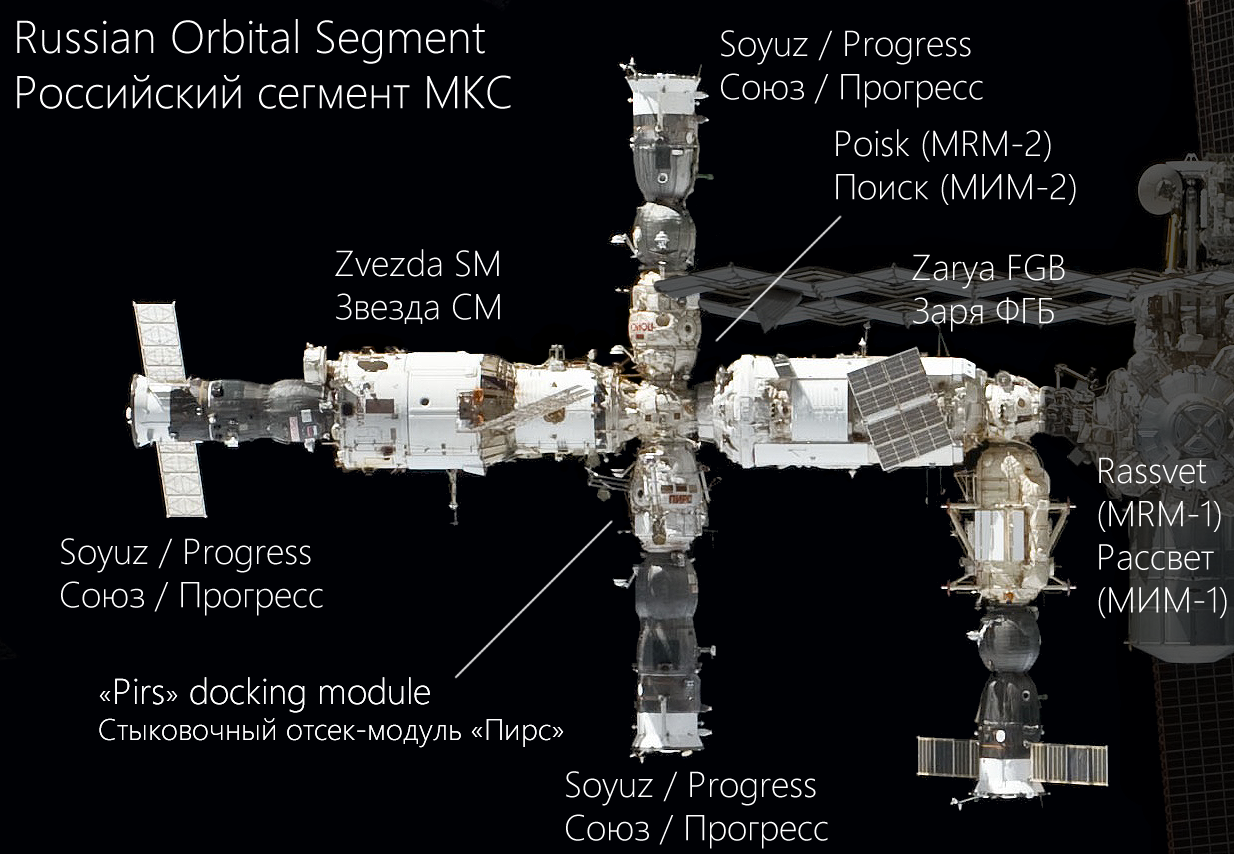Mir-2 on:
[Wikipedia]
[Google]
[Amazon]
''Mir''-2 was a
 Russian elements of the
Russian elements of the
Mir-2 on Astronautix
{{Russian human spaceflight programs Cancelled space stations Cancelled Soviet spacecraft
Soviet
The Soviet Union,. officially the Union of Soviet Socialist Republics. (USSR),. was a transcontinental country that spanned much of Eurasia from 1922 to 1991. A flagship communist state, it was nominally a federal union of fifteen nation ...
space station project which began in February 1976. Some of the modules built for ''Mir''-2 have been incorporated into the International Space Station
The International Space Station (ISS) is the largest modular space station currently in low Earth orbit. It is a multinational collaborative project involving five participating space agencies: NASA (United States), Roscosmos (Russia), JAXA ( ...
(ISS). The project underwent many changes, but was always based on the DOS-8 base block space station core module, built as a back-up to the DOS-7 base block used in the ''Mir
''Mir'' (russian: Мир, ; ) was a space station that operated in low Earth orbit from 1986 to 2001, operated by the Soviet Union and later by Russia. ''Mir'' was the first modular space station and was assembled in orbit from 1986 to&n ...
'' station. The DOS-8 base block was eventually used as the '' Zvezda'' module of the ISS. Its design lineage extends back to the original Salyut
The ''Salyut'' programme (russian: Салют, , meaning "salute" or "fireworks") was the first space station programme, undertaken by the Soviet Union. It involved a series of four crewed scientific research space stations and two crewed ...
stations.
Project history
The evolution of the ''Mir''-2 project
1981 to 1987: KB Salyut Mir-2
The prototype of the central module was as Polyus. ''Mir''-2 would be capable of docking at least four modules in ordinary operation.December 14, 1987: NPO Energia Mir-2
Designated as OSETS (Orbital Assembly and Operations Centre). The station would be built in a 65 degree orbit and consist of 90 ton modules. *Launch 1 - DOS 8, providing housing for the assembly crew. *Launch 2 - 90 ton module. *Launch 3 - Truss and solar arrays. *Launches 4 to 6 - additional 90 ton modules.1991: "Mir-1.5"
This would involve launch of the DOS-8, after which theBuran shuttle
''Buran'' (russian: Буран, , meaning "Snowstorm" or "Blizzard"; GRAU index serial number: 11F35 1K, construction number: 1.01) was the first spaceplane to be produced as part of the Soviet/Russian Buran program. Besides describing the fir ...
would grapple the module, rendezvous with ''Mir'', and attach it to the old DOS-7 base block. This plan was later altered so that
DOS-8 would maneuver and dock itself to ''Mir''. It would remain attached for two years.
1992: "Mir-2"
The station would consist of the DOS-8 core module and a cross beam called the NEP (Science Power Platform
The Science Power Platform (SPP; russian: Научно-Энергетическая Платформа, ''Sci-Energy Platform'', also known by Russian initialism NEP) was a planned Russian element of the International Space Station (ISS) that was ...
). This was equipped with MSB retractable solar panels, Sfora thruster packages and small scientific packages.
Four 3 to 4 ton modules were planned:
*Docking Module - with the APDS universal androgynous docking system, and a side hatch for space walks
*Resource Module - Equipped with gyrodynes for orienting the station and a passive docking port for docking of Soyuz or Progress ferry spacecraft
*Technology Module - with materials experiments
*Biotechnology Module
November 1993: International Space Station built around Mir-2
 Russian elements of the
Russian elements of the International Space Station
The International Space Station (ISS) is the largest modular space station currently in low Earth orbit. It is a multinational collaborative project involving five participating space agencies: NASA (United States), Roscosmos (Russia), JAXA ( ...
include:
* Zarya FGB, the first element launched. This was a US-funded TKS
The TK (TK-3) and TKS were Polish tankettes developed during the 1930s and used in the Second World War.
Design and development
The TK (also known as the TK-3) tankette was a Polish design produced from 1931 based on the chassis of the British ...
-derived propulsion module built by KB Salyut.
* Zvezda Service Module - this is the DOS-8 station, which was launched as the third major ISS module in July 2000.
*SO-1 ( Pirs) - one of the docking modules originally designed for Buran/''Mir''-2 was added to the station in September 2001.
*SO-2 Poisk - A module similar to Pirs. Poisk also provides extra space for scientific experiments, and power-supply outlets and data-transmission interfaces for external scientific payloads.
* Rassvet - the only module delivered by NASA shuttle, in a barter exchange for the launch 'owed' for Zarya. Rassvet is used for cargo storage, science, and as a docking port for visiting spacecraft.
References
External links
Mir-2 on Astronautix
{{Russian human spaceflight programs Cancelled space stations Cancelled Soviet spacecraft